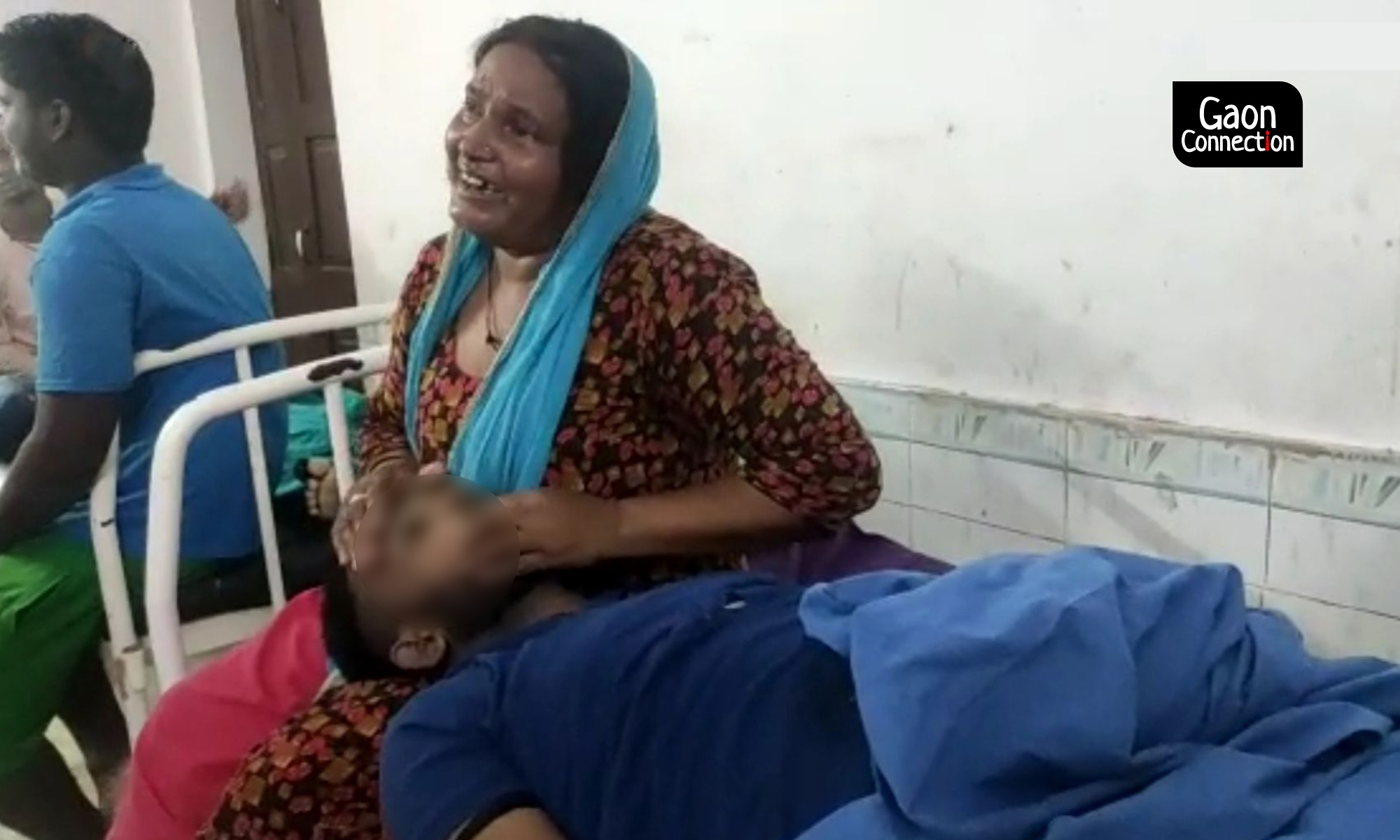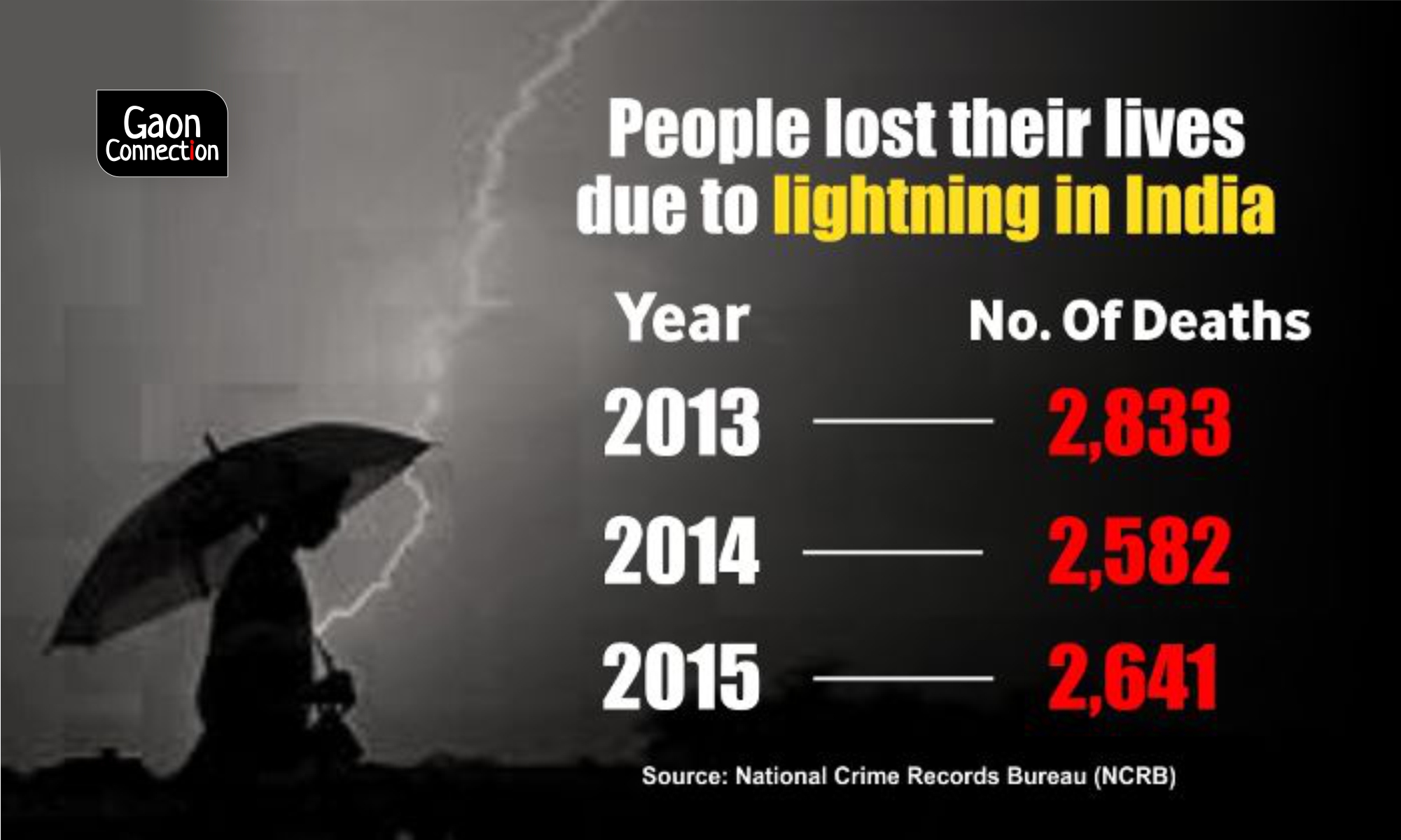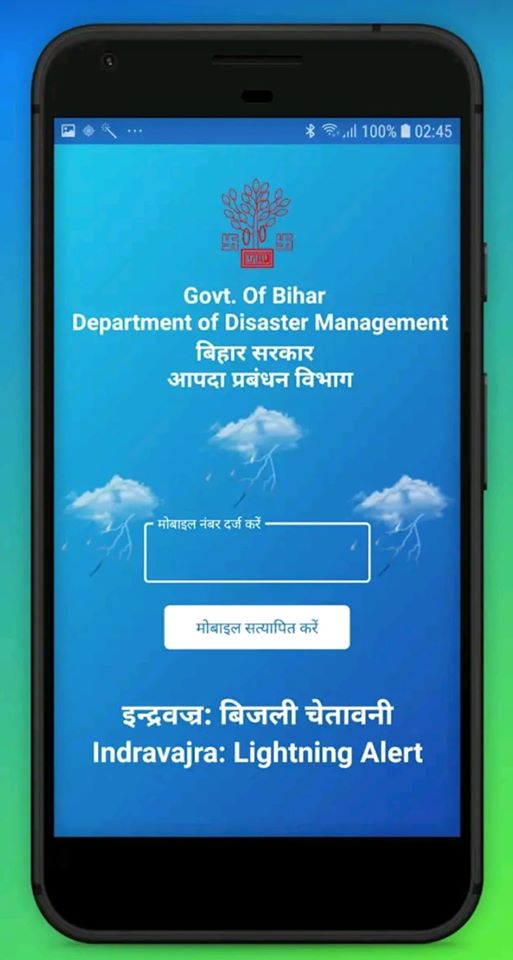Despite forecast warnings and mobile apps, 154 dead in 3 weeks due to lightning strikes in Bihar, Uttar Pradesh and Jharkhand
In spite of lightning sensors, alerts through mobile apps, over 2,500 people die annually due to lightning strikes in the country. The state governments need to bridge the last-mile communication challenge to reduce these preventable deaths.


A Gopalganj man injured due to a lighning that struck him. Photo: Umesh Kumar Ray
In the last two days, 16 people have died due to lightning strikes in Jharkhand. A week earlier, on July 4, 21 people were killed in Bihar when lightning struck them. But, the biggest lightning disaster took place in the last week of June, when on a single day, on June 25, 93 people were killed in Bihar. The same day, in the neigbouring Uttar Pradesh, another 24 lost their lives in a similar disaster.
Since June 25, at least 154 lightning strike deaths have been reported in just three states – Bihar, Uttar Pradesh and Jharkhand.
Further, in the last two months, 315 people have died in Bihar and Uttar Pradesh alone died due to this natural disaster.
Lightning strikes and resultant deaths are not uncommon in India. On average, 2,500 people die every year – that is, seven deaths every day – due to lightning strikes in the country, notes a 2018 report of the National Disaster Management Authority. These deaths accounted for about 39 per cent of all deaths from natural disasters in the country between 1967 and 2012.
In 2013, 2014, and 2015, a total of 2,833, 2,582, and 2,641 people died due to lightning strikes in India, respectively.

The recent high death toll due to lightning strikes is being blamed on various factors including climate change. But, according to V Gopalakrishnan, a senior scientist with the Indian Institute of Tropical Meteorology (IITM) Pune, lightning strikes take place in Uttar Pradesh, Bihar and parts of Jharkhand every year in the last week of June and early July.
“There is not much difference in the frequency of lightning strikes last year and this year. Maybe a slight increase. But, yes, the death toll has been high, as a large number of people working in the open agricultural fields were struck by lightning and died,” Gopalakrishnan told Gaon Connection.
In the last two years, IITM Pune, an institute of the Union ministry of earth sciences, has installed 83 lightning sensors across the country of which seven sensors are in Bihar and Uttar Pradesh. These sensors detect lightning within an area of 200-300 kilometres and automatically pass on the information to the central processing unit to issue forecast warnings to the concerned state governments.
“It is possible to warn local people about lightning strikes 25-30 minutes in advance. And if people run to safer closed locations, lives can be saved,” he added.
“Majority of the deaths are in rural areas where farmers work in the wet fields to sow kharif crops due to the arrival of the monsoon. Warnings are issued but last-mile communication remains a challenge,” said Pradhan Parth Sarthi, professor at the Department for Environmental Sciences, Central University of South Bihar in Gaya. He is also the president of Indian Meteorological Society, Patna. One of the lightning sensors of IITM Pune is located at this university in Gaya, Bihar since last August.
Why do lightning strikes occur in this season?
According to Gopalakrishnan, lightning strikes are common when the southwest monsoon is setting in the country. “The thunderstorm and lightning clouds are different from the monsoon clouds. Former need high surface heating and moisture,” he said.
“Because of the summer season, there is enough surface heating. And the monsoon winds bring moisture from the ocean, thus aiding the formation of thunderclouds that cause these lightning strikes,” he added.
Apart from Bihar and Uttar Pradesh, lightning strikes are also reported in the states in peninsular India, such as Telangana and Andhra Pradesh. As the monsoon propagates from the south towards the north, so do the thunderclouds and lightning strikes.
“Once the monsoon sets in the country properly, these lightning strikes will reduce,” said Gopalakrishnan.
But, Sridhar Balasubramanian, associate professor of mechanical engineering and an adjunct faculty member at IDP Climate Studies, IIT (Indian Institute of Technology) Bombay claims the recent lightning strikes are due to prolonged Western Disturbances.
“Thunderstorms and lightning events require strong instability to prevail from surface to mid-latitude along with a lot of moisture incursion. The instability could either come from a convective system, like ground heating or from a synoptic system like Western Disturbance,” he explained.
A Western Disturbance is an extra-tropical storm, which originates in the Mediterranean region and carries moisture from the Mediterranean Sea and from the Caspian Sea, and travels in an easterly direction causing precipitation in northern India.
Balasubramanian has analysed temperature data for the last month of June over North India, which doesn’t show much anomalous heating. But the Western Disturbance season shows a clear prolonged period, where a Western Disturbance hit North India as late as June 4-5.
Not only this but, weak Western Disturbance conditions also prevailed over North India until June 10th. This kept the instability active at the surface and mid-levels, leading to the formation of thunderclouds, he informed.
Also, the moisture was abundant due to the rapid progress of monsoon currents to Uttar Pradesh and Bihar, wherein timely onset was seen in Bihar (first time in the last five to six years) and early onset over East Uttar Pradesh.
“These monsoon currents brought in a lot of moisture from the Bay of Bengal branch. The combination of instability and moisture abundance triggered massive thunderclouds along with charged particles, which eventually led to intense rains and lightning events over Bihar and Uttar Pradesh,” Balasubramanian concluded.
Thunderstorms and lightning strikes are reported in north India even during the pre-monsoon season (April and May). But those lightning strikes are not widespread because in the pre-monsoon season though there is enough surface heating due to the summer heat, sufficient moisture is not available. So, the lightning is limited, said Gopalakrishnan.
According to Parth Sarthi, there are three broad reasons that make Bihar and parts of Uttar Pradesh prone to lightning strikes. “This region is in Terai belt at the foothills of the Himalayas. Apart from the surface heating and moisture, its geographical location is also responsible for high lightning strikes, as the Himalayas provide orographic lift due to their steep gradient,” he told Gaon Connection.
But, Gopalakrishnan differs slightly. “There are two peaks in lightnings strikes — once in the afternoon and then at night. The lifting mechanism of the Himalayas causes night lightning strikes. But, most deaths occur during the day time when people are out in the open,” he added.
Modelling and forecasting lightning
IITM Pune has been researching on lightning and working on ways to forewarn people. There are two broad ways to forecast lightning. First, meteorological modelling in which models can predict lightning 24 hours in advance. This data is available with both IITM and India Meteorological Department, which disseminate it.
However, data generated through these models is for a very large area and not specific to a location.
To address this issue, IITM Pune has set up a network of 83 lightning sensors across the country that automatically transmits information. These sensors can detect lightning within a radius of 250-300 kilometres.
Explaining how these sensors help forecast lightning strikes, Gopalakrishnan said: “There are two types of lightning inside a thundercloud. One is intracloud, which is within the cloud. And the other is cloud to land. The former starts 25-30 minutes before the lightning strikes from cloud to land.”
Thus, as soon as intracloud lightning starts, the sensor transmits the data, which is used to issue an advance warning. “These sensors also detect cloud movement, hence we can warn in advance where the lightning strikes are expected in the next one hour or so,” he added.
The ministry of earth sciences also has an app – Damini – specifically meant for lightning alerts. This app provides information on lightning strikes within 20 kilometres radius.
The India Meteorological Department website also has a page on real-time lightning across the country. For this, it uses INSAT3D satellite merged with ground lightning instruments installed by the IITM and the Indian Air Force.
Meanwhile, the Department of Disaster Management, Bihar government has its own mobile phone app, Indravajra, to pre-warn people about lightning strikes.

With sensors, satellites, mobile apps, why are so many people still dying due to lightning strikes in the country?
Last-mile communication challenge
According to Parth Sarthi, concerned agencies and state governments are collecting data and disseminating information. But, the last mile communication challenge remains. Since the majority of the deaths occur in rural areas where farmers work in the open wet fields, it is important to train rural people in simple dos and don’ts during the lightning season.
“Not everyone in rural areas has a smartphone. There is a need for regular training and awareness programmes in villages. Local mukhiya and sarpanch should be roped in for these programmes to educate the people,” he said.
Meanwhile, Balasubramanian stressed on the need for an extensive array of lightning devices and associated alerts. This is the only way we can reduce deaths, he said.
The state governments needs to proactively work with the local communities as only issuing alerts on mobile phones may not be enough. These over 2,500 annual deaths due to lightning strikes are preventable.
Scientific data and timely communication must translate into saving lives.

